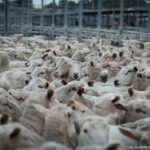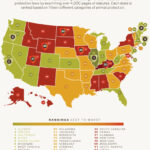Animal cruelty is a pervasive issue that casts a long shadow over societies worldwide. The breadth of this maleficence often goes unnoticed, lurking like an insidious specter in the corners of our everyday lives. To fully comprehend the scale of this crisis, we must delve into the statistics that reveal the stark reality of animal suffering.
Firstly, it is essential to define what animal cruelty entails. This heinous act manifests in various forms, from physical abuse and neglect to more subtle forms of psychological torment. When we think of cruelty, images of brutal beating or deliberate harm may come to mind. However, neglect, abandonment, and insufficient care can be equally torturous for innocent creatures, spiraling them into suffering without a visible mark.
The statistics surrounding animal cruelty are staggering. In the United States alone, millions of animals are reported as victims of abuse each year. The American Society for the Prevention of Cruelty to Animals (ASPCA) estimates that approximately 1 million animals are abused annually. This figure represents only the reported cases; vast numbers likely remain unreported, hidden from public scrutiny, like secrets simmering beneath a surface of indifference.
In examining the patterns of abuse over time, one must acknowledge the chilling reality that the rates of animal cruelty do not seem to decrease. In fact, reports suggest an alarming upward trajectory. This is reminiscent of a tide that, instead of receding, relentlessly washes over vulnerable shores, eroding protections and nurturing a culture of desensitization.
The sheer volume of reports surfaced on social media and through animal welfare organizations adds further weight to the evidence of widespread cruelty. Graphic images and haunting narratives pour forth almost daily, inundating our digital spaces with accounts that provoke outrage, sadness, and, at times, apathy. The coat of invisibility that once cloaked animal cruelty is shedding, making way for a raw, unvarnished reality that demands acknowledgment.
Delving deeper into specific types of cruelty reveals alarming trends. For instance, dog fighting remains a pervasive issue, a barbaric practice reminiscent of antiquated gladiatorial contests, thriving in dark recesses of society. An estimated 40,000 people engage in dog fighting operations across the United States, showcasing a criminal underbelly fueled by gambling and depravity. The brutality inflicted upon these loyal companions disrupts the very fabric of empathy we ought to cultivate towards all living beings.
Equally shocking is the increase in abuse stemming from hoarding situations. Animal hoarders, driven by complex psychological issues, often accumulate animals in distressing conditions. Statistics indicate that there are over 3,500 reported hoarding cases each year, involving over 250,000 animals. These creatures endure unimaginable conditions, often suffering from malnutrition, disease, and psychological trauma. They exist like wretched passengers on a sinking ship, trapped without hope of rescue.
What is particularly disconcerting is the age group of abusers. Studies have established a nexus between animal cruelty and broader patterns of violence. Research indicates that individuals who commit acts of cruelty against animals are often predisposed to perpetrate violence against humans. This alarming correlation presents a stark warning: as we ignore animal suffering, we may be nurturing future generations capable of deeper societal harm.
The issue transcends mere numbers and delves into the very essence of our humanity. It is imperative to recognize that behind each statistic lies a sentient being, an innocent life caught in the crosshairs of malice. Each report represents not just an animal but a failed societal duty to protect the vulnerable among us.
Despite the grim statistics, a flicker of hope persists. Awareness campaigns and educational programs have emerged, championing the need to foster empathy and compassion towards non-human creatures. These initiatives strive to dismantle the myths that allow cruelty to flourish. They cultivate a new generation that views animals not as possessions, but as sentient beings, deserving of respect and protection.
Moreover, legislation aimed at curbing animal abuse has gained traction, signaling a turning tide in public consciousness. Advocates and organizations are tirelessly pushing for stricter laws and better enforcement mechanisms. The message is clear: cruelty is unacceptable, and societal intolerance for such actions is imperative. Trapping animal abusers in a web of consequence establishes a formidable deterrent, akin to laying a foundation for a stronger ethical edifice.
In conclusion, the statistics surrounding animal cruelty are not just numbers; they are a call to action. Like a clarion call piercing the fog of normalcy, these figures compel us to confront an uncomfortable truth. The fight against cruelty requires collective vigilance, persistent education, and unwavering advocacy. It is a movement born out of compassion, echoing through the annals of ethics, pushing us towards a future where kindness reigns and the shadows of cruelty recede into oblivion. It is an imperative we cannot afford to ignore.








